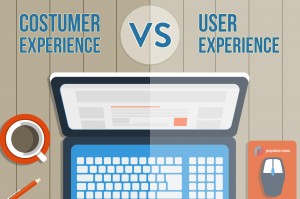Ergonomics design has been very popular in design world recently. No wonder, every good web designers or graphic designers will absolutely considering the ergonomic design when it comes to mobile design interfaces. But do you know what ergonomic mobile interface is. Ergonomics has always been very important to industrial designers, but it’s becoming increasingly important to digital designers since we no longer use a keyboard and a mouse, but we use more physical activities, such as tap, pinch or stroke them.
This new physical activities demand designers to not only think about how a design looks and feels, but also the physical aspects of using it. So, how can we create a mobile design that is comfortable to use as a result of being ergonomic.
- Design for Multiple Holds
If you keen enough to observe how people hold their mobile devices, you will discover that they use variety of different holds. Therefore, creating a design with multiple holds in mind is important. For example, you need to test your designs out across a range of holds to see how comfortable your design on each of them.
- Design for Thumbs
Thumbs is the most used body parts when it comes to gadget. In fact, thumbs drive the majority of all smartphone interactions. This is because thumbs are exclusively used when a mobile is held in one hand and heavily used when it is held in two hands. Therefore, you should create tag targets which are slightly bigger than your fingers. A good tap targets should at least 44 x 44 points (16x16mm), with at least 7 points (2.5mm) between them. Bigger target is always better rather than the smaller one. However, if you still want to make a smaller target, you better not go any smaller than 44×30 points (16x11mm). This size can be used as a standard in making tap target in any device.
- Place Popular Controls in Reach
Locating links and buttons in easy to reach place will ease your user interactions. The middle and bottom is the most favorable place to locate any controls, buttons, or links. Moreover, you should be careful when placing the menus at the bottom corners, since it will easily lead to a tricky tap, especially when a device is being held in only one hand.
- Place Content above Controls
To prevent any disruption or halt when you are playing the content as they tap the screen, always try to place content above controls. Moreover, you also need to put key information outside the screen area to avoid any finger or thumb’s disruption.
- Design with Portrait Mode in Mind
Although, you can choose either to use smartphones vertically or horizontally for the majority of the time, horizontal is usually used for particular tasks, such as viewing videos or photos. Of course a mobile design should ideally support both vertical and horizontal modes, but unless you are designing a video or photo-heavy site or application, please always design with portrait mode in mind.


